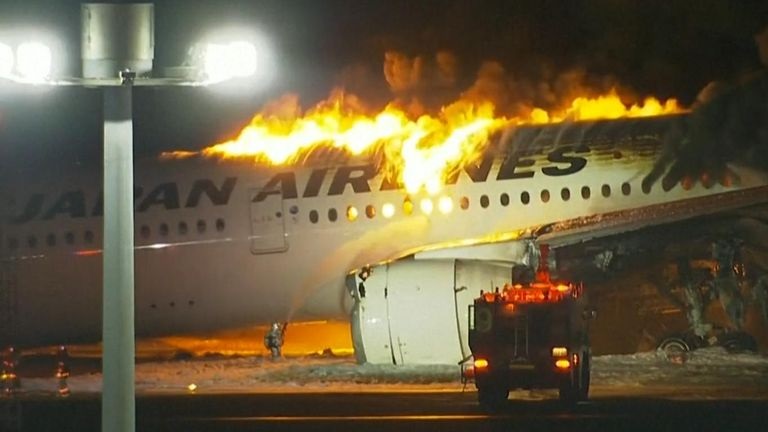KUALA LUMPUR – Despite the common tendency of passengers to relax and disregard safety briefings before takeoff, aviation experts insist that paying close attention to flight attendants can be crucial for survival in emergency situations.
The recent incident involving a Japan Airlines (JAL) Airbus A350-900 and a coast guard aircraft at Tokyo’s Haneda Airport demonstrated the effectiveness of preparedness for such a scenario, leading to the safe evacuation of all 379 passengers and crew from the large aircraft.
While some may attribute the outcome to a “miracle”, the experts stress the importance of acknowledging the sense of urgency exhibited by both the flight attendants and passengers.
Captain Mohd Kamil Abu Bakar, former Malaysia Airlines flight operations director, highlighted the significance of staying focused during safety briefings before takeoff.
“For their own safety, the passengers must pay attention to the safety briefing and be alert during takeoffs and landings, regardless how frequently they fly,” he said when contacted by Scoop.
Kamil added that the successful evacuation was because of safety requirements being met, including tests to see if passengers could evacuate the plane within 90 seconds and the Airport Emergency Services (AES) reaching the scene within 180 seconds.
He also said all airlines are safe and train their crew on emergency procedures every year – without exception – according to the Civil Aviation Authority’s requirements.
“All crew must maintain a high level of alertness during takeoffs and landing, to cater for the possibility of having to evacuate the passengers in an emergency,”

He said this while referring to the Malaysian Airlines System Flight 684 on December 18, 1983, which crashed en route to Subang International Airport but all 247 passengers and crew evacuated safely.
Expressing similar sentiments, a pilot of a local carrier said JAL’s evacuation was a result of proper training by the cabin crew and the passengers’ rule-abiding nature.
“(Japanese people) tend to follow instructions well and not delay from doing whatever they are told,” the pilot who declined to be named said, after viewing a video clip of the passengers efficiently evacuating.
“If you are told to leave your belongings during an emergency, people in past incidents have tried to take their items, which causes obstruction,”
Citing Geert Hofstede’s cultural dimensions, the pilot with almost two decades of experience said Japanese people often have high uncertainty avoidance, which contributes to them efficaciously following instructions.
However, he added that it is not necessarily a culturally-specific action, noting that passengers of US Airways Flight 1549 had also efficiently evacuated when their flight crashed into the Hudson River on January 15, 2009.
The pilot also believed that the Runway Approach Lights – a set of lights to help pilots gauge distance at the tarmac – may have obscured the small coast guard aircraft from JAL’s sight.
Noting that both crafts had claimed they received the green light to respectively land and take off, he said there is “always an element of human error.”
At around 6pm (7pm Malaysia time), JAL flight 516, an Airbus A-350 that had flown from New Chitose Airport in Hokkaido Prefecture, was landing on Haneda’s C-runway when the coast guard flight MA-722, a Bombardier Dash-8, collided with it, with both aircraft catching fire.
AFP reported that Japan Transport Safety Board’s Takuya Fujiwara said the agency found the coast guard aircraft’s flight and voice recorders, while those belonging to the Airbus were still in search.
A recording from Haneda’s control tower, seemingly made just before the coalition, portrayed a voice advising JAL’s flight to “continue approach”.
NHK reported that the control tower instructed the coast guard plane to hold short of the runway, but a coast guard official said its pilot claimed he had permission to take off immediately after the accident – which took the lives of five members aboard the plane.
The crash forced Haneda to shut down all runways for several hours on Monday, which led to 226 flights being cancelled and affecting over 40,0000 passengers. – January 4, 2023


